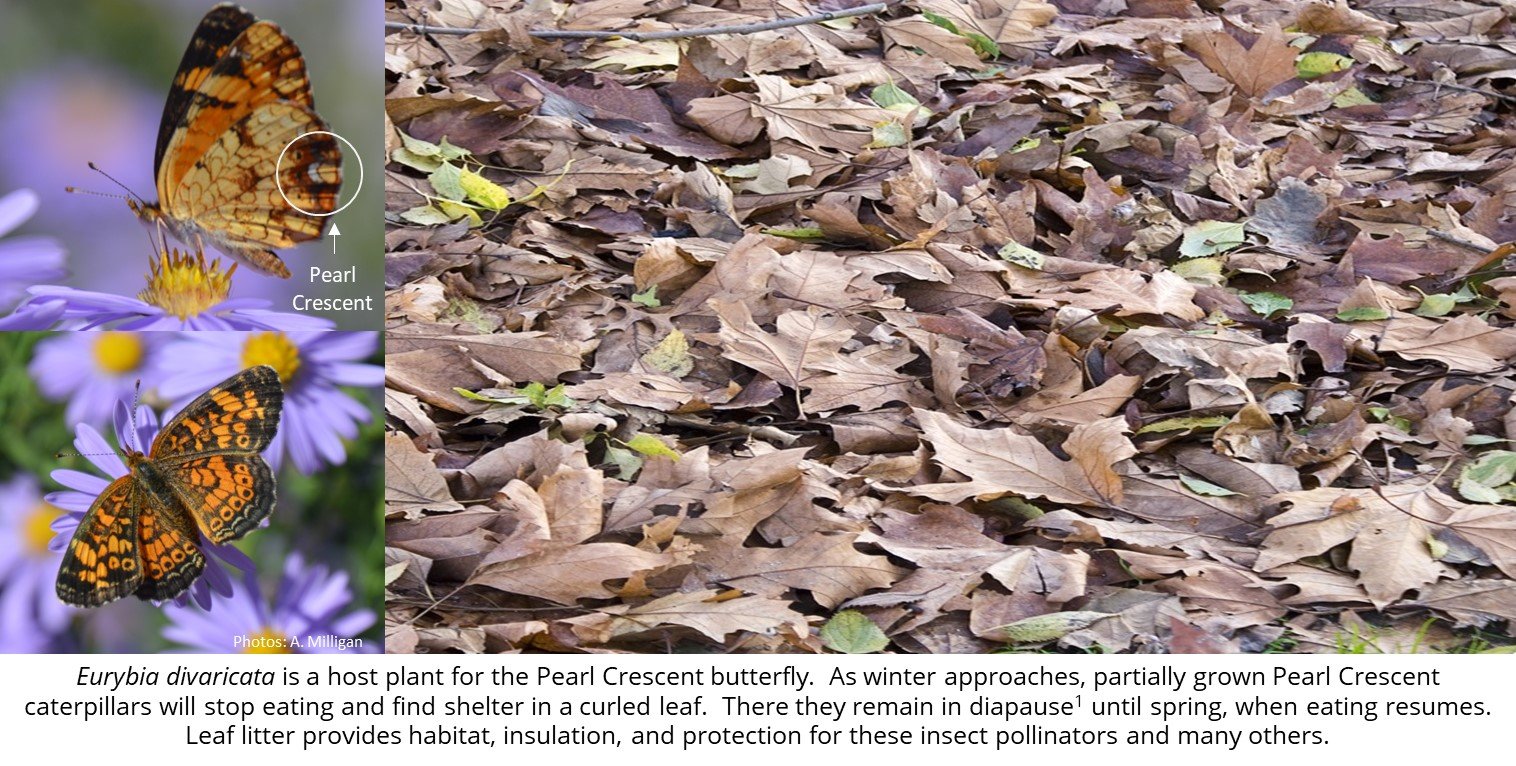November’s Native Maryland Plant
Eurybia divaricata (L.) Nesom
(yoor-RIB-ee-uh dy-vair-ih-KAY-tuh)
Common Name: White Wood Aster
Eurybia divaricata (formerly Aster divaricatus) is a rhizomatous perennial groundcover that is typically found in wooded areas. I consider it an outstanding groundcover in that it can thrive in full shade, in dry soil (even under pines), with little regard for soil compaction or pH – it’s also one of the first asters to bloom in my garden. Its heart-shaped, coarsely serrated, dark green leaves cover the ground in spring, and by mid-summer clusters of small composite flowers emerge - white rays with yellow discs that turn to purple as the plant ages; these flowers light up dark wooded areas and provide food for some of the smallest of pollinators. In the fall the seedheads are eaten by birds.
White wood aster is a wonderful companion for many native woodland sedges and ferns. It is also the host plant for the Pearl Crescent (Phyciodes tharos) butterfly.
As wonderful as Eurybia divarcata is as a woodland groundcover, during the winter months I allow it to be hidden by a blanket of leaves. Like many of you, I’ve spent countless hours carefully selecting and planting native plants to support pollinators and other life and I don’t use pesticides. Much of that effort is diminished if I remove leaves that these creatures rely on for winter protection.
Resist the urge to blow your leaves; they provide critical habitat for overwintering pollinators, including the Pearl Crescent and many other butterflies, moths, and beetles. Decomposing leaves build healthy soil, suppress weeds, retain moisture, nourish plants, and provide valuable forage for birds. Leaving the leaves means you’ll see more butterflies and bees in the spring – maybe even the Pearl Crescent if you plant Eurybia divaricata.
¹ a period of suspended development in an insect
Alison Milligan – MG/MN 2013
Watershed Steward Class 7/CBLP
aligmilligan@gmail.com




